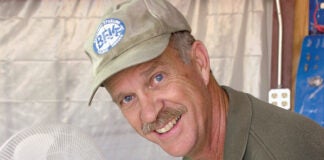
The Lycoming Disassembly & Assembly course wrapped up this morning as we studied and installed the oil pump, accessory case, and magnetos – along with a bunch of other small but essential external parts that are needed to make the engine run. Putting on parts such as intake and oil drain tubes, ignition harnesses, oil filters and the like is referred to as “dressing the engine,” and when you’re done, it is ready to hang on an airplane – or at least a test stand.
Well, it would be if these engines were destined to run – but a close examination of our “new” engine will show that the ignition wires are frayed and broken, and the, ahh… carburetor (if you can call it that) doesn’t really fit on the engine. But that’s not the point – these engines were never destined to run again – just to be taken apart by the next set of students to attend the school. What’s important is that all of the moving parts move (properly), and that the students have learned the right way to put these machines together.
Oh, and the next set of students to pull these apart might just find evidence that they are not the first… 🙂














